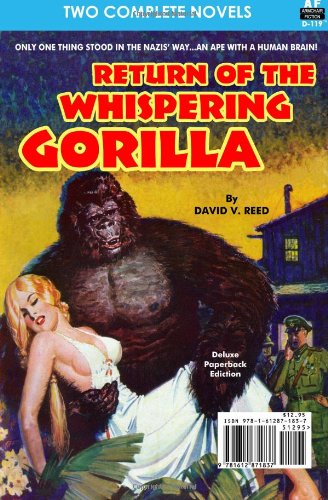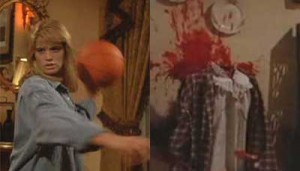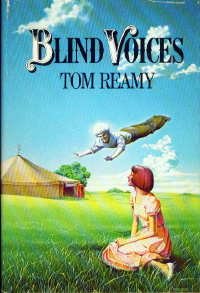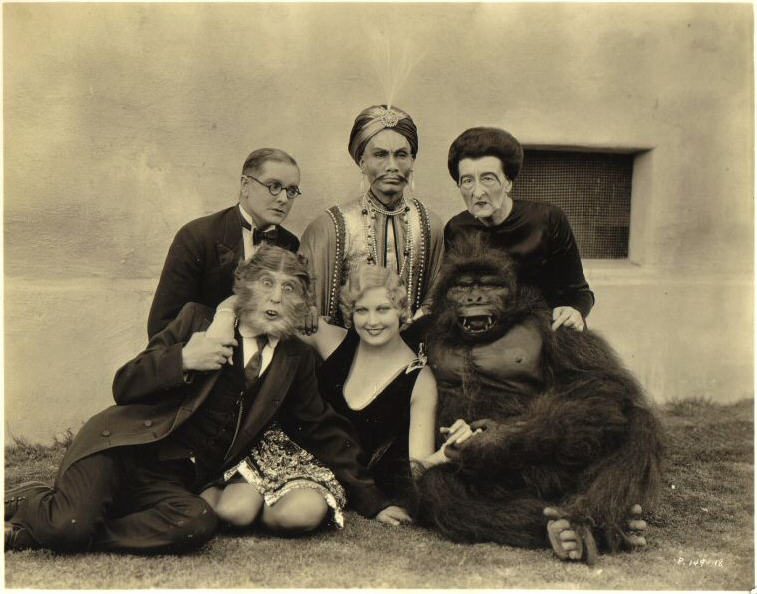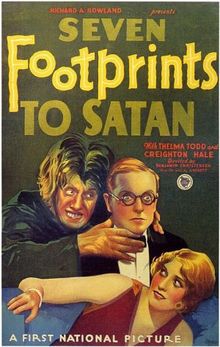By Scott A. Cupp
This is the 157th in my series of Forgotten Books.
My love of the gorilla in prose and film has been well documented in the various Forgotten reviews that I have done. So, when Bill Crider reviewed The Whispering Gorilla a few months ago, I was intrigued. Particularly since the novel and its sequel were both readily available from armchair Press for a mere $12.95 with covers on both sides of the trade paperback, much like an old Ace Double, except the second novel and cover were not printed upside down.
Ace reporter, Steve Carpenter, is stepping on toes and receiving death threats. He is investigating the rackets and their possible ties to Nazis! Carpenter is sent by his boss to Africa to hide out and continue writing his stories. But the mob has a hit man who takes his job seriously and he manages to track down Carpenter in Africa.
Carpenter has found a refuge next door to scientist Dr. Devoli who is working on getting a gorilla to speak by modifying the voice box. The gorilla, Plumbutter, is responsive to the surgery. However, when Carpenter is killed, Dr. Devoli decides to go one further and transplants Carpenter’s brain into Plumbutter’s body.
The transplant works and now Carpenter wants to return back to the U.S. to continue writing his expose. To do this, he convinces a Broadway promoter to star him in a play as the most amazing gorilla actor ever. Everyone knows that he must be someone in a gorilla suit, because gorillas cannot talk. He never appears out of the “suit” which creates publicity and gets on the radio under the pseudonym “W.G.” Clever.
He fights the gangsters and the mob on the air and in the paper. He is once again a target but he is the 800 pound gorilla in the room. Gradually, he finds the transplant has some problems and Plumbutter’s body begins to invade his consciousness. With Devoli’s help, they manage to stop the Nazi threat.
This first “novel” was written by Don Wilcox under the editorship of David V. Reed who worked hard with Wilcox in its construction. Later, Reed would write the sequel.
Carpenter is still fighting his gorilla nature. He and Devoli are working in Africa. However, the drugs necessary to keep Carpenter in control are becoming harder to obtain because the World War is going on and the sanity doses are becoming less frequent. Carpenter is in communication with the local gorillas, whom he can understand. He is called Ologwa the Strange One and he tries to teach the gorillas how to control fire and other human traits.
Since the World War features in here, we’ve got to have Nazis! And they show up with a beautiful girl in tow. They want Devoli to provide trained gorillas to pilot suicide mini-subs to throttle the Allies’ fleets.
Ologwa is having trouble with hisz reasoning abilities and starts to work with the Nazis, but he fools them at the same time.
This is pure pulp fiction. Logic is not going to work hard here, but I had fun. This has B movie written all over it and I am surprised one wasn’t made. It would have been great fun for America’s youth and the war effort.
You are not going to confuse these books with anything written later than 1945, but if you’re in the mood for some wild gorilla action, they fill the bill. Check it out.
Series organizer Patti Abbott hosts more Friday Forgotten Book reviews at her own blog, and posts a complete list of participating blogs.


